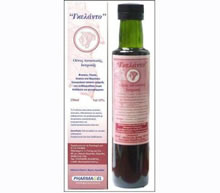
Λεξικό .. Fragrances photoallergic or phototoxic reactions
Fragrances photoallergic or phototoxic reactions
Fragrances are widely used in topical formulations and can cause photoallergic or phototoxic reactions. Placzek M, et al (2007) identified the phototoxic effects of 43 fragrances which were evaluated in vitro with a photohaemolysis test using suspensions of human erythrocytes exposed to radiation sources rich in ultraviolet (UV) A or B in the presence of the test compounds.
Haemolysis was measured by reading the absorbance values, and photohaemolysis was calculated as a percentage of total haemolysis. Oakmoss caused photohaemolysis of up to 100% with radiation rich in UVA and up to 26% with radiation rich in UVB. Moderate UVA-induced haemolysis (5-11%) was found with benzyl alcohol, bergamot oil, costus root oil, lime oil, orange oil, alpha-amyl cinnamic aldehyde and laurel leaf oil.
Moderate UVB-induced haemolysis was induced by hydroxy citronellal, cinnamic alcohol, cinnamic aldehyde, alpha-amyl cinnamic aldehyde and laurel leaf oil. The phototoxic effects depended on the concentration of the compounds and the UV doses administered. We conclude that some, but not all, fragrances exert phototoxic effects in vitro. Assessment of the correlation of the clinical effects of these findings could lead to improved protection of the skin from noxious compounds.
References
Placzek M, Frömel W, Eberlein B, Gilbertz KP, Przybilla B. Evaluation of phototoxic properties of fragrances. Acta Derm Venereol. 2007;87(4):312-6.
Γκέλης Ν.Δ. - Λεξικό Αλλεργίας - Εκδόσεις ΒΕΛΛΕΡOΦΟΝΤΗΣ - Κόρινθος 2013
Gelis Ν.D. - Dictionary of Allergies - VELLEROFONTIS Publications - Corinth 2013




